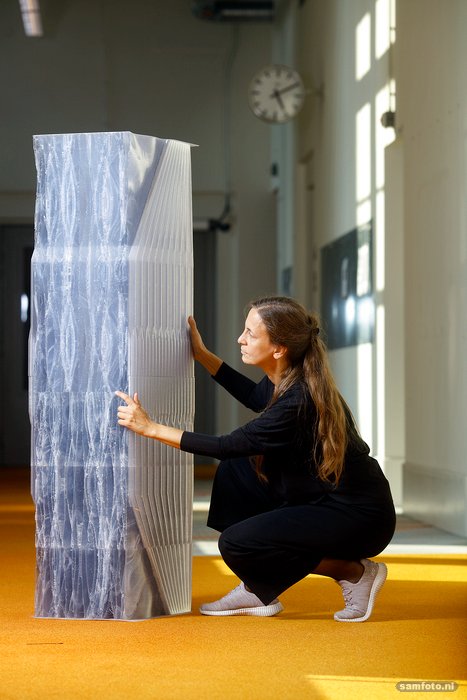Sponge wall saves energy
The closed structures in the middle of the photo are inspired by cellular structures, such as in sponges and bones. The air-filled hollows form an insulating layer between inside and outside. The fluid channels on either side of the insulation are more like veins or blood vessels through which fluid flows with minimal resistance. Pumping the fluid transfers heat from the interior to the outside to cool down at night, or it brings solar heat from the façade to the inside on a chilly day. The sponge wall thus saves energy for heating and cooling, as simulations have shown. The experimental façade
panel was made by a 3D printer filled with PET-like material (PET is known from water bottles). It was the result of the 4TU Lighthouse project SPONG3D (2016 - 2017) to test daring new ideas. Besides the 3D printing company KIWI-Solutions, eight researchers and students from TU/e and as many from the TU Delft Faculty of Architecture were involved. Dr Michela Turrin was one of them. "It is an experimental idea not yet ready for application,” she says. “Yet, it has provided valuable insights.” Later, several students graduated on optimising the sponge wall, such as the best use of materials and which shapes have the best performance.
